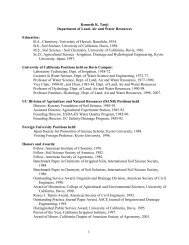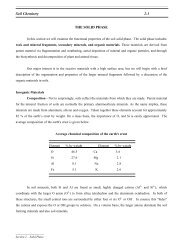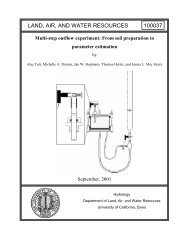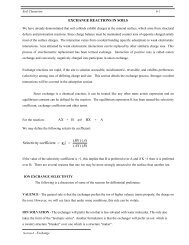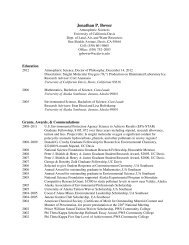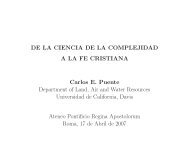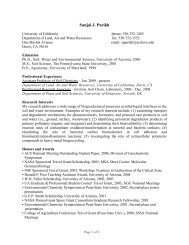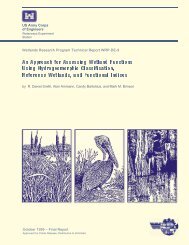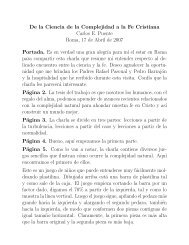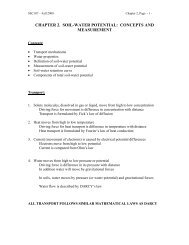Chapter 3. Saturated Water Flow - LAWR
Chapter 3. Saturated Water Flow - LAWR
Chapter 3. Saturated Water Flow - LAWR
You also want an ePaper? Increase the reach of your titles
YUMPU automatically turns print PDFs into web optimized ePapers that Google loves.
SSC107 – Fall 2000 <strong>Chapter</strong> 3 Page 3-4<br />
The gradient should really be taken as an infinitesimal small change,<br />
notation)<br />
dH<br />
dX<br />
(differential<br />
Volume of H 2 O flowing through soil will be dependent upon area, hence<br />
Divide Q by A to describe flow on a relative basis:<br />
Q<br />
A = J<br />
w<br />
3<br />
⎡ m<br />
m s or m ⎤<br />
⎢<br />
⎣ s<br />
⎥<br />
⎦<br />
Q<br />
A = J = V At<br />
2 w<br />
J w - flux density (flux),<br />
which is proportional to<br />
∆H<br />
∆X<br />
The proportionality constant between flux and gradient is K, the hydraulic conductivity,<br />
or<br />
∆<br />
J w is proportional to K<br />
H ∆X<br />
For saturated sand, Darcy found that K was constant. Thus,<br />
J w = K<br />
∆H<br />
∆X<br />
✪ Can you now relate the Darcy flow equation with Poiseuille’s law ?<br />
What sign? + or -





